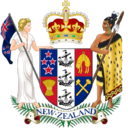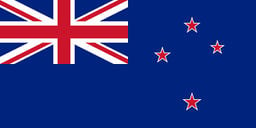New Zealand Government and Politics
 New Zealand | ||||||
|---|---|---|---|---|---|---|
| ||||||
The Government and Politics of New Zealand operate within a representative, parliamentary, system. The head of state and head of the government is the popularly elected Prime Ministers of New Zealand.
Executive power is exercised by the government which consists of an unlimited number of ministers, who are appointed by the Prime Minister. Legislative power is vested in the Parliament of New Zealand, the unicameral national parliament.
In the early days, the political landscape in the past has been divided by several political parties - Aotearoa, New Zealand Union Party, Peace 'n' Prosperity Party and Ranginui. In these early days, a historical opposition between Aotearoa (and its successors, Stranka Srpskog Korpusa; later known as Ujedinjenje ili smrt, Red label Party/Love and Peace) and the Peace 'n' Prosperity Party, historically opposed and competing entities. These parties trace their roots back to linguistic communities that migrated to NZ in its early years. Ranginui, historically the third political party has only ever been in power when in coalition with either of the two main political groups.
As time passed by, new parties appeared on the New Zealand political scene, including Black Party of New Zealand (October 2012; later transformed into Black hand Party); Socialist Party of New Zealand (October 2013) and Maori Party (September 2014), while only two of the old parties remained active, Ujedinjenje ili smrt and Peace 'n' Prosperity Party.
Executive
 Prime Ministers
Prime Ministers
The Prime Minister of New Zealand is elected on the fifth day of every month by the citizens of New Zealand. Upon taking office, a Prime Minister's first set of duties requires him to organize his or her cabinet ministers, who assist them in the running of the country.
Premier House, is the official residence of the Prime Minister of New Zealand.
Government Departments and Cabinet of Ministers
See also: List of governments of New_Zealand
Executive authority is exercised by a cabinet known simply as the Government. There is no limit on the number of Ministers but it almost always consists of the Prime Minister, the Vice President and a host of other Ministers. The Prime Minister is elected on the 5th of each month. The remaining ministers are appointed by the President usually a day or two after the elections. The Prime Minister, and by extension the government, must enjoy the confidence of Parliament and, in the event that they cease to enjoy the support, the Prime Minister can face an impeachment motion which could remove them from office.
 Legislative
Legislative
Membership of the Parliament is open to all NZ citizens who reside in a recognized region of NZ on election day. The electorate consists of all players who have NZ citizenship. Members of Parliament are known as MPs or Congress members. The Prime Minister and members of the Cabinet need not be members, however, it is common practice to appoint some MPs to the Cabinet. The Parliament is the only body which can approve or disapprove legislative proposals and introduce them along with the Prime Minister. Since the collapse of Aotearoa in March 2011, no single party has had a majority, so that has meant coalition governments have been the norm.
Elections are held on the twenty-fifth of each month. The entirety of Parliamentary operations is conducted through the New Zealand forums and IRC Chats.
 Political Parties
Political Parties
A number of political parties are represented in the Parliament and coalition governments are common. The New Zealand electoral system has been characterised as a four-party system, with four medium parties dominating. This changed around September 2011, following the steady collapse in support for Ranginui and the relative rise of the support for other parties.
The largest party at the time in NZ was the Peace 'n' Prosperity Party (PnPP), which has its origins in the English-speaking community of the old Provisional Government that migrated during NZ's birth. Traditionally the PnPP is associated with a strong belief in free-enterprise and domestic protection. The party is known for being relatively free of ideology and is viewed as a catch-all party. The PnPP was formed by a minor faction of the old provisional government, made up of veteran eRepublik players. It formed governments in May, June and September 2011.
The second largest party at the time was the centre-left Ujedinjenje ili smrt (UIS) which was founded as a successor party to Aotearoa. The UIS is the political wing of the Serbian Kiwi militia Srpski Korpus and has governed in various coalition governments and led one in October 2011. It has typically been the partner of the RLP and its successor L&P.
The third largest party was Love and Peace (L&P), established in September 2011 as the successor to the once-dominant Red label Party (RLP). Its predecessor, the RLP, played a huge role in NZ politics following the collapse of Aotearoa. The party has seen its support level rise substantially since its founding and it formed the government under CP Helen Moon.
Ranginui, a party typically associated with Slovenian Kiwis, founded in February 2011, were the fourth largest party in 2011. The party was strongly associated with centre-left ideology and it had generally adhered to this program. It was the first party to officially be founded by a military unit, in this case, the Angry Angels. It has served in nearly every 2011 NZ government since its formation. Its support has steadily declined and the party and ultimately the party disappeared from the political scene.
The Red Squad (RS) was a communist political party which has been a consistent force in NZ since its formation in May 2011. The party historically drew its membership from the more left-wing elements of the Serbian and Slovenian Kiwi communities.

